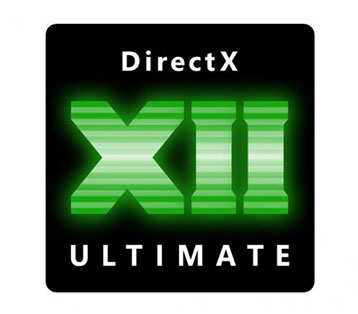Our Aim
To provide you with an overview on New And existing technologies, hopefully helping you understand the changes in the technology. Together with the overviews we hope to bring topical issues to light from a series of independent reviewers saving you the time And hassle of fact finding over the web.
We will over time provide you with quality content which you can browse and subscribe to at your leisure.
TekSpek 's

DirectX 12 Ultimate
Date issued:
With next-generation games consoles scheduled to make their debut later this year, industry stalwart Microsoft has ratified a new standard of development APIs marketed as DirectX 12 Ultimate.
Picking up the baton from DX12, which launched half-a-decade ago, the new tech is described as "the culmination of the best graphics technology we've ever introduced in an unprecedented alignment between PC and Xbox Series X," and is set to kickstart a new generation of innovative graphics across multiple platforms.

The advancements intended to aid developers in their quest for compelling gaming experiences centre around four pillars:
1. DirectX Raytracing 1.1
True-to-life lighting has been the dream for game development for as long as we can remember, and raytracing has brought us closer than ever. DirectX Raytracing 1.0 (DXR 1.0) laid the foundation for accurately tracing the trajectory of light, and while DXR 1.1 is deemed an incremental upgrade, it offers a handful of essential functions.
For the first time, GPU shaders will be able to spawn raytracing tasks without having to take a round trip to the CPU, increasing efficiency for adaptive-raytracing scenarios like shader-based culling and refinement. Another key advancement is inline raytracing, which allows developers to harness raytracing tech in any shader stage, such as compute shaders or pixel shaders, making it ideally suited to simpler scenarios where reduced overheads help bring ray-traced realism to less prominent areas of the game.
2. Variable-Rate Shading
As the name suggests, Variable-Rate Shading (VRS) gives developers the opportunity to vary a game's shading rate in response to on-screen content. In effect, the GPU can be cranked-up when visuals are key, or dialled-down in scenes where detail levels aren't as important, or the reduction in overall quality is unlikely to be noticed.
Sound familiar? The first tier or VRS tech has already been rolled into the DX12 feature-set, but DX12 Ultimate paves the way for tier two, a more powerful standard that enables the shading rate to be varied within a draw call. Developers can choose to make adjustments with a screenspace image or on a per-primitive basis, giving creators more control over shading rate with a view to improving in-game performance.
3. Mesh Shaders
Efficiency, as you've no doubt gathered, is integral to DX12 Ultimate, and the introduction of mesh shaders plays a crucial part. Effectively ripping-up the geometry pipeline rule book, mesh shaders step away from a traditionally linear approach by making geometry processing behave more like compute shaders.
Freeing up developers to process geometry as they see fit, mesh shaders can schedule threads, with access to shared memory, to efficiently compute results without having to process individual vertices or primitives. The flexibility of such fine-tuned control is expected to be a real boon for game creation, but as with all new technologies, adoption may take some time as developers get to grips with a modern, more adaptable pipeline.
4. Sampler Feedback
Appreciating the overriding theme of efficiency? Then sampler feedback will be right up your street. Addressing the memory concerns of next-generation games, this new tech is designed to feed data to the game engine, recommending which parts of a texture may be used to satisfy a sampling request without actually having to do so.
This crucial information allows the engine to efficiently govern which data is used, and when it needs to be kept in memory. Sampler feedback will play a vital role in improved texture streaming throughout next-generation games, and its usefulness will be keenly felt on upcoming games consoles, where textures can be moved from high-speed, solid-state storage to minimise the impact on the graphics card's memory.
PC and Console Unified
There is a lot of talk of next-generation games, but don't many of the aforementioned technologies already sound familiar? That's because Nvidia has led the charge with its current Turing architecture, whose feature-set has brought advancements such as raytracing, variable-rate shading and mesh shaders to existing GPUs across the GTX and RTX product lines that are already fully DX12 Ultimate compliant.
Looking ahead, AMD GPUs based on the forthcoming RDNA2 architecture will level the playing field with full DX12 Ultimate support, and with the same architecture powering next-generation games consoles such as Xbox Seriex X and PlayStation 5, we are on the verge of an era in which developers will have a single ecosystem in which to create games for a variety of major platforms.
By unifying the latest DirectX API across PC and console, DX12 Ultimate can be viewed as a driving force for cutting-edge graphics in 2020. There has never been a better time to be a developer, and in turn, gamers can look forward to never-before seen levels of realism.
Ready for a taste of the next generation? A wide range of NVIDIA DX12 Ultimate graphics cards are available to purchase right here at Scan Computers.